Rustic Romance: Taking Weddings to the Farm

ExciteMINT at CL Marble Farms
Beat the Heat with 10 Utah Ice Cream Shops






Rustic Romance: Taking Weddings to the Farm

ExciteMINT at CL Marble Farms
Beat the Heat with 10 Utah Ice Cream Shops





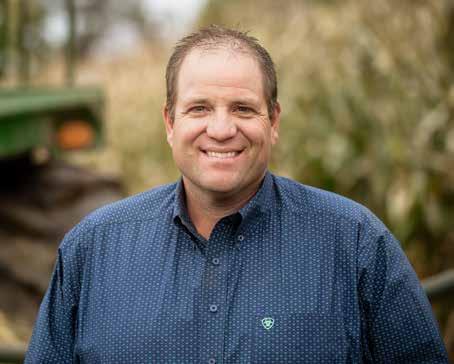
Iwant to extend a warm, summer’s welcome to you, our Utah Farm Bureau members, as you read our most recent issue of our Utah Farm & Fork magazine.
As we’ve seen warm temperatures hit our state, we’ve had questions about how the crops, animals, and farmers are doing. It’s touching to see the
concern that people have, especially as we remember the brutal drought conditions of the past few years. But what an amazing thing happens when you get water! Our farmers have been doing their best to make sure we have an ample, affordable food supply, but they have a much easier time doing it when they know they have the water to keep things going. Prayers of thanks have gone
up around the state for helping us stick through another year and making it a little more likely to pass the farm on to the next generation.
The summer is always a welcomed time, full of community celebrations, farm stands with delicious produce, and who doesn’t love some ice cream? While food is the most obvious benefit all Utahns get from our farmers and ranchers, there are many other ways that our families and communities are better with agriculture. From caring for the environment and capturing carbon to providing wildlife habitat and preserving open space. And let’s not forget the stable economic base for our rural communities that comes from agriculture!
I hope you enjoy the stories in our magazine and learn a little more about the great farm and ranch families that bring food to our tables. Enjoy!
18 Beat the Heat With these Ice
22 2023 Photo
30 Ruth’s Diner: A Recipe for Success
32 Refreshing Summer Mint Soda
34 Food Holidays

"OUR MISSION: TO INSPIRE ALL UTAH FAMILIES TO CONNECT, SUCCEED, AND GROW THROUGH THE MIRACLE OF AGRICULTURE"

UTAH FARM BUREAU FEDERATION 9865 South State Street Sandy, UT 84070 801-233-3000 | utahfarmbureau.org
Ron Gibson President Utah Farm Bureau Federation
WADE ELIASON Vice President Utah Farm Bureau Federation
SPENCER GIBBONS Chief Executive Officer Utah Farm Bureau Federation
MATT HARGREAVES
Managing Editor
Vice President of Communications
UTAH FARM AND FORK is the official publication of the Utah Farm Bureau Federation. ©2023 by the Utah Farm Bureau Federation.
UTAH FARM AND FORK (ISSN 1068-5960), August 2023, Vol. 70 No. 3. Published five times per year by Utah Farm Bureau Federation, 9865 S. State Street, Sandy, Utah 84070. Subscription price $10 a year. Periodicals Postage Paid at Sandy, Utah, 84070.
POSTMASTER: Please send address changes to the Utah Farm Bureau Federation, 9865 S. State Street, Sandy, UT 84070-3205.

DESERET NEWS | HOME TOWN VALUES 55 North 300 West, Suite #500 Salt Lake City, UT 84101 801-204-6300 | deseret.com
MEGAN DONIO
Creative Director
SERINA NIELSON
Senior Graphic Design
RHECE NICHOLAS Senior Graphic Design

YouTuber & Celebrity Towman Talks about his foundation growing up in agriculture and the connections he makes now getting people out of trouble
BY MATT HARGREAVES, EDITOR, UTAH FARM & FORK MAGAZINEUtah Farm & Fork caught up with Matt Wetzel of Hurricane, Utah to talk about his childhood growing up on a small family farm, his love of fixing things, and how he became the most unlikely of YouTube influencers. You may know him by his business and YouTube name — Matt’s Offroad Recovery (MOR) — which has more than 1.5 million subscribers. His channel also has 900,000+ followers on Facebook and 190,000 followers on Instagram, where he shares the harrowing adventures of rescuing people and vehicles from mishaps in southern Utah.

WHERE WERE YOU BORN? TELL US ABOUT YOUR FAMILY AND YOUR CHILDHOOD.
I grew up in Southern Utah, in Washington County. It was myself and seven sisters and our
parents. In my family now, my wife (Jaymie) and I have four boys.
DID YOU GROW UP ON A FARM OR HAVE A FAMILY GARDEN? OR WORK WITH FARM ANIMALS OR PETS GROWING UP?
My family primarily did custom harvesting all over southern Utah and to as far north as Holden. In my Dad’s Massey Ferguson 750, we harvested a lot of barley back then, but we also did milo and oats and even a little wheat and rye.
We also grew a lot of dryland watermelons near Coal Pits Mesa and the Canaan Gap. It seems to fly in the face of conventional wisdom, but they were amazing. They were the best on the planet. It’s ruined me because I can’t get a good one now.
I had fond memories of it and I learned a lot, but it was an awful amount of
work. But as a kid, we ate really well. Some watermelons didn’t look as nice, so we could have as many of those as we could eat. It was amazing!
TELL ME ABOUT SOME MEMORIES/EXPERIENCES THAT STAND OUT FROM WORKING ON YOUR FARM. DO YOU OR YOUR FAMILY HAVE A GARDEN NOW?
This isn’t a criticism at all, but I watched what we did and saw how hard it can be to make a living. Our food is incredibly inexpensive when you compare it with all the work that goes into it. You have to specialize or have value-added products. The experience helped shape me into who I am and I’m proud of that.
I was always more interested in the mechanic side of things though. We had plenty of things to work on, and I loved doing it. We had to be able to do the work
ourselves on our equipment. Anyone that works around old farm equipment will learn how to weld and the other repairs to get you through the end of the season. My job was to keep the machinery running. We had an old Farmall A tractor and an old diesel Minneapolis Moline. We’d fix up the old equipment and make it work.
I liked the engineering side of things and found that I liked working on the tractor more than I did working in the tractor. But it’s all good work.
WAS BEING INVOLVED IN MECHANICS SOMETHING YOU WANTED TO DO WHEN YOU WERE A CHILD? HOW DID YOU GET INVOLVED IN YOUR CURRENT INDUSTRY?
I toyed with the idea of becoming a plumber when I was living in Henrieville,
but I moved to Hurricane because the dating pool was bigger there! I worked for Stout Roofing for several years and got to be the emergency mechanic and problem solver. I later started my own roofing company, but his heart wasn’t in it.
I heard of a towing company for sale, and I bought it and started Red Rider Towing. I tried promoting the company through social media because they weren’t a well-established towing company. I really enjoyed what I was doing and applied branding lessons from what I learned from the demolition derby. I painted all of my trucks the same color so I could build a recognizable connection with fans. You could take a 5th place finish and still have fans and people care.
It didn’t take me long to know that if I posted a nice picture, no one cared.
But if I showed pics of vehicles buried in sand, people loved it. People wanted to know more about how I got vehicles out or they doubted that I could get them out.
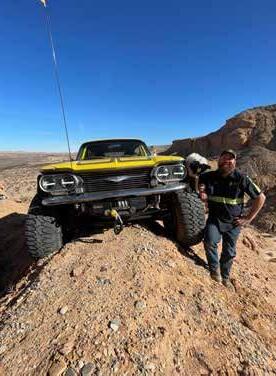
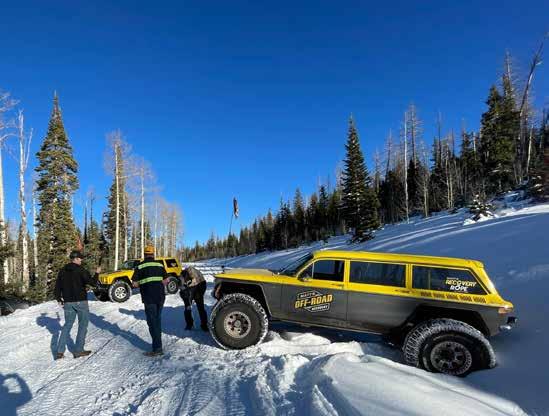

That’s where I learned that you’ve got to tell the story engagingly, then you’ve got to capture it on camera so that it supports the story. It took about 2.5 years from thinking ‘I should have a Youtube channel’, until I put my first video out.
There’s an astronomical number of hours of content uploaded to YouTube every day, but most of it is garbage and doesn’t go anywhere. It’s not a trick or formula you crack, it’s knowing how you like to engage with content, and then engaging with people that way.
I did a lot of research on YouTube for channels that were going strong that were some of the original YouTubers, and some that were
dead after a year or two. I learned the right and wrong way to do things before I put a lot of effort into it.
I’ve practiced hundreds of hours filming myself, watching my nervous ticks, and training myself not to do them. It’s ok to be on YouTube and not be professional. You can be vulnerable, but you don’t want to do it the whole time.”
There are just sure signs you are absolutely not comfortable being on YouTube, and I would say that one of the biggest keys to YouTube is you have to be confident. Not arrogant or cocky, but confident enough that you can be vulnerable and not worry about knowing everything on a topic.
I wanted to launch my channel and have enough videos that people could consume if they liked it. I think I put out five or six videos or maybe something, but I didn’t know how to edit at this point. So, I taught myself how to edit and everything was done on my iPhone. I was filming editing, and completely uploading and running the entire YouTube channel off an iPhone 7. I ended up crashing that phone and lost a bunch of footage, and that’s when I realized I was going to have to bring somebody in to help
me. Currently, we have about 25 people that work with us, either full-time, part-time, or contractors.
Early on, most of what I was filming primarily from offroad recoveries are rental car people that are up here. They’re coming to see Zion [National Park] and they’re not familiar with the area. There is free camping everywhere, but there’s no warning sign that says if it rains, you are never going to get out of here, or if you pull onto the sand, you’re done.
I was filming those jobs adequately, but not expertly. And I was editing them adequately, but wasn’t focusing enough on the story. I realized fairly early on that it wasn’t the off-road crowd that was my audience — they had nothing to do with off-road and didn’t care about towing, but they would just tell me that for some reason, they loved my channel. So, I knew that I needed help focusing on that — the story. These people want to engage with me on a more personal level than they do on a professional level or technical level.
We have a viewership of about 6 million people. We’ve got 1.4 million subscribers, but across our platforms about 6,000,000 viewership. I would say 2% of those people are off-road enthusiasts. So, we’ve reached out way, way outside of what the channel was conceived as. It wasn’t even initially for offroad enthusiasts, it was for offroad recovery enthusiasts. Now, it’s grandmas and grandpas, and some of them are just initially connecting because it’s a channel that they can turn their kids or their grandkids onto and they don’t have
to worry one bit about what we’re going to do or say. We might first be on because we’re someone they trust and then they grow to like it.
PROJECTS?
I get to think of what I want to build or create and tinker with, and then I build it in the shop here and film it. It’s got to be tied into the off-road recovery, but I thoroughly enjoy modifying the Jeep Cherokee to make it better, and then building a Corvair station wagon into a four-wheel drive rig which raised eyebrows across the world.
You know you can get something like a five-ton military truck and pull RVs out with no problem, but it won’t go on one of those trails. But I get something like the Banana (a bright yellow 2001 Jeep Cherokee) or the Moorvair (a bright yellow 1961 Lakewood Wagon) that will do those tight technical trails like a dream. And then you put them out on the beach and took two of them together to try to pull the RV and you got to call a third Jeep and to help you do it. So, I am pushing myself to be able to build a vehicle like that. For me, that’s where that’s at.
I’M CURIOUS TO KNOW ABOUT YOUR OWN FAMILY AND YOUR CONNECTION TO FOOD. DO STILL LOVE WATERMELONS?
We have a son that watermelon is all he’ll eat. We also have egglaying chickens, and we have a garden that we work at. We also have a few peach trees.

IS THERE A RESTAURANT THAT IS YOUR FAVORITE HERE IN THE SOUTHERN PART OF THE STATE YOU LOVE?
In Hurricane, it’s probably Main Street Cafe. I also like Red Lobster or Texas Roadhouse.
IN YOUR OWN HOUSE, WHAT WOULD BE A GO-TO FOOD ITEM THAT YOU MAKE IF YOU DON’T WANT ANYTHING FANCY?
That’s going to be venison steak, potatoes, gravy, and corn. That’s something that I’m never disappointed in. For our family, that’s everyone’s favorite meal. All homemade from scratch.
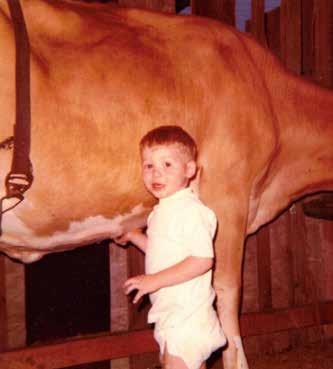
IN YOUR BUSINESS, YOU’VE TALKED ABOUT THE ABILITY TO CREATE CONTENT THAT RESONATES WITH YOUR AUDIENCE. IT SEEMS LIKE WE SEE THAT WITH FOOD AS WELL. WHY DO YOU THINK PEOPLE SEEM TO BE INTERESTED IN FOOD RIGHT NOW?
“That’s interesting, and there’s actually a little tie in there. I gave a little presentation at VidSummit
(a conference for video creators, marketers, and brands involved in content creation) this last year. The main thrust of the talk was the ‘nacho moment’. This was a time when we were in Vail heading up to a job, and we went to a gas station, and Lizzy Ballard (an employee of MOR and a Washington County Farm Bureau member) got nachos and we just talked about it for only 7-12 seconds, and there was a spike there and then audience retention went up after that. That’s rare. Retention usually drops on YouTube videos as the video goes longer.
Days after we launched the video, retention on that video was still 82%, which is nuts. To put that in perspective, YouTubers start getting excited with retention around 46%.
And why was that? Why did it go up to 82? We started reading the comments, and it was all about this basic connection people could have with Lizzy liking nachos because the audience themselves liked nachos and go to gas stations for food too. We would get all this feedback from people about how Lizzy didn’t get enough cheese on the nachos, or she should put jalapenos on the nachos, or whatever. So, food is something that brings people together. Even if you just show it in a YouTube video, it brings people in. It gives people something to connect to. It makes us way more relatable because there’s a really good chance that everybody that watched that video has stopped and got something at a gas station within the last 24 hours.
More information can be found at mattsoffroadrecovery.com or by following their YouTube channel, @MattsOffRoadRecovery.


Curtis and Lisa Marble own CL Marble Farms located in Corrine, Utah. Curtis grew up on a farm. Farming is in his blood, it’s what he loves. On the other hand, Lisa, grew up as a city girl in South Ogden and had never even heard of the small community of Corrine, just miles north of Ogden. She had no idea that one day she would be living a completely different life in Corinne and loving every minute of it.

Lisa earned her MBA and worked in hospital administration writing hospital policies and procedures. She worked for six years in Iraq, and
when she came back, a new friend, (who just happened to be Curtis’ nephew), set them up on a date.
Curtis laughs, “I figured if she could last six years in Iraq, she would do okay on a farm.” They married and now work together to help the farm thrive. Curtis adds, “Lisa brings a positive attitude to the farm. She’s so supportive. We work right alongside each other.”
Lisa agrees, “We work together, laugh together, and just have fun together.”
CL Marble Farms grow onions, hay, corn, wheat, squash, pumpkins, and mint.
Crop diversification is important to the profitability of the farm. Curtis described one difficult year, “We got a few days of rain followed by four days of frost and lost our entire crop of onions. That was a hard year. Diversifying our crops helps us ride out some of those storms.” Crop diversification is why Marbles started farming mint.
The United States produces about 70% of the world’s mint production, and 84% of that production comes from the states of Oregon, Washington, and Idaho.
The Marbles are one of two registered mint growers in Utah, and both are located in Corrine. Marbles currently grow 160 acres of mint. An acre is about the size of a football field, so imagine 160 football fields planted in mint. An acre of mint produces about 76 pounds of oil.
Chances are that you use a product made with mint every day. Things like, toothpaste, mouthwash, breath mints, chewing gum, candies, teas, ice cream, desserts, essential oils, medicine, lotions, shampoos, cocktails, and sauces for meat dishes.
Mint is a great source of antioxidants and is an anti-inflammatory. Mint contains Vitamins C, D, E, and A which improve the immune system. Mint has been found to
help relieve indigestion, reduce cold symptoms, manage stress, improve allergy symptoms, and keep the mouth healthy because of its antibacterial properties.
Mint loves warm days and cool nights. It needs a lot of water, heat, and nitrogen to grow. Heat is what makes the plants create the oil. The oil is stored in glands on the underside of the peppermint and spearmint leaves. The Marbles grow peppermint and Scotch & Native spearmint varieties.
Good mint requires special care to ensure top quality oil. Plants are monitored to determine the prime time to harvest. Mint used for toothpaste is harvested before the plant flowers. Mint used for mouthwash is harvested after the plant blossoms.
A hard rainstorm just before harvest can wash all the oil from the mint leaves and can destroy a whole crop, or leaving the crop in the field too long can result in the loss of leaf oil.

Mint is planted with roots, not seeds. Individual roots are planted with generous amounts of water.
Lisa warns, “Don’t plant mint in your garden because it’s an invasive plant and will take over the entire area.” She recommends planting mint in containers.
After the first year, mint produces what are called “nuclear roots”. Farmers pull those roots and plant them in another field. This is called planting first generation mint roots.
Mint is a rotation crop. Every four to five years, the mint is taken out of the field and something else is planted there so the soil stays nutrient rich.
When mint grows it looks like hay but has longer vines. The oil is found in the leaves and is easily identified by its aroma when entering a field.
Lisa’s favorite job on the farm is driving the windrower, which is a machine used to cut the mint “hay”. The smell of the mint in the tractor cab is like aroma therapy. Curtis’ favorite day on the farm, however, is when the harvest is finished.
The harvest season for mint is midJune to late-September, but it all depends on the location of the fields.
When the crops mature, windrowers mow swaths down the mint field, leaving mounded rows of “hay” or cut mint. The hay is left to dry in windrows for 12-24 hours.
The windrows are then picked up by a mechanical chopper. The

mint is cut up into tiny pieces and blown into a sealed mint tub, which resembles a giant garbage bin on the back of a truck
During the harvest season, the mint tub trucks roll steadily from the fields to Marble’s distillery, where pressurized steam shoots through the tubs, vaporizing the mint oil.
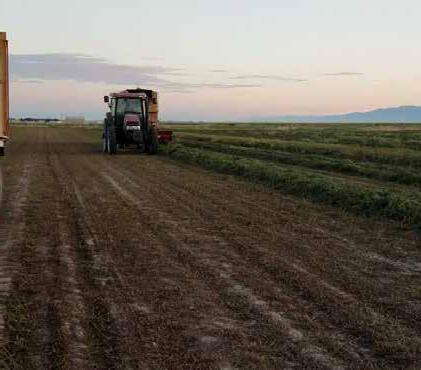
Each mint tub is connected to a steam line. Steam enters at the bottom and cooks the mint. As steam rises to the top, mint oil is turned into vapor form.
The oil vapors and steam pass through a line at the top of the tubs to water-cooled condensers,
where they return to a liquid in the form of water or mint oil.
In pyramid-shaped separators the mint oil rises to the top and is drawn into huge drums. The filled drums are then ready for shipment to the buyers.
After the mint is cooked and the oil is extracted, the byproduct is called “mint plug”. It can be worked back into the fields to help build up the nutrients in the soil.

The farming experience teaches what can’t be understood from books. Dealing with forces beyond your control, facing crushing disappointments, surviving costly mistakes all take courage, resolve

and strength of character. Grit becomes part of who farmers are.
Curtis recognizes that he has learned the quality of patience, not only in his agricultural endeavors but in his personal relationships as well. He’s made mistakes and has learned from them. He’s patient in letting others make their mistakes and growing from them as well.
Lisa admires Curtis’ prudent nature, “Curtis does a good job at living within our means. His father taught him, ‘You can’t borrow yourself out of debt and you can’t spend your way into prosperity.’ So, if Curtis needs to fix a tractor, I see him out in the shed welding something until he produces the needed part to fix the tractor.”
Each day is filled with something new on the farm. Whether it’s new crops or new problems springing up, the Marbles have learned to face farm life together with gratitude, hope, and a lot of hard work. Marbles and Mint – how refreshing!




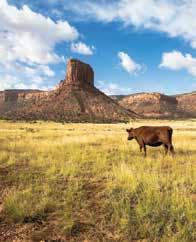

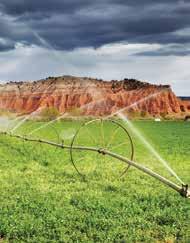
As couples-to-be increasingly seek unique and picturesque settings for their special days, the trend of hosting weddings on farms has gained immense popularity. Combining the charm of rural landscapes with the allure of a relaxed atmosphere, farm weddings have become a popular choice for couples looking to create unforgettable memories.
Once considered a humble and traditional choice, farms now offer an idyllic escape from the bustling urban settings, enticing couples with their beautiful scenery and authentic ambiance. With sprawling open space, century-old barns, and breathtaking vistas, farms provide the perfect option for couples to design their dream weddings while still including many of the amenities found in traditional wedding venues.
The charm of farm weddings lies in their unique blend of rustic elegance and personalized touches. Couples have the
freedom to infuse their personalities into every aspect of the celebration, from custom-made decorations to hand-picked flowers or agricultural centerpieces decorating the tables, farm weddings allow for couples to have an experience as unique as their love story.
Utah is no stranger to this trend, and some of its farmers and ranchers are getting into the wedding business as a new way of sharing their heritage and expanding their business.

Farm weddings also provide an opportunity to indulge in farm-to-table dining experiences. Many couples opt for locally-sourced, seasonal produce to create a feast that delights the taste buds of their guests. Farm-totable dining not only elevates the dining experience but also supports local farmers and businesses.
Harmony Cox and her family help manage the Ranch at Wild Rose,
just off Highway 89 in Kane County, near the town of Alton. The beautiful 180+ acre ranch sits between Zion National Park and Bryce Canyon National Park and enjoys a wide range of guests that come to enjoy the beauty and remoteness of the ranch. Because of the remoteness of the venue, Cox said the weddings are more intimate and memorable, and allow for many small businesses in the area to be blessed by the wedding.
“Rather than having to shake hands with 300 of your parents’ friends that you don’t know, this is an intimate experience with your family,” Cox said. “This also blesses the lives of others in our community, because they offer vacation rentals or other businesses that are used in the wedding, such as caterers and florists, and we’ve even had someone that does IV treatments come before weddings to make sure all the party guests are hydrated so they can have a good experience when the wedding comes.”
The Coxes got into the wedding and event business as a way to complement their existing family ranch and agritourism efforts. Rather than coming up with experiences like a trail ride, the Coxes also allow guests to accompany them on 10-day cattle drives through the mountains and perform other tasks needed to make the ranch function.

“We like to give our guests authentic cowboy experiences. We’re going to have you ride a horse with a purpose, not just for a trail ride,” Cox said. “We want to develop long-term relationships with our guests and help them come away with an understanding of what our industry is about. It’s a lot of work, but it helps tell our story.”
Kelli Snider and her husband, Casey, run The Barn in Old Paradise in Cache County. After working to renovate portions of the farm and building a barn to serve as a wedding and event venue, Kelli found that running the facility was a lot like farming.

“Establishing and running the venue is a lot like farming in that it’s taken a lot of hard work — including plenty of blood, sweat, and tears — and a commitment and dedication to making the dream work,” Snider said. “What I like about our venue is the type of people we attract. We attract really kind people. Whether they grew up on a farm or are a few generations
removed. I have brides say things like, ‘I just love this place. It reminds me so much of my grandparent’s farm where I spent a lot of time growing up,’ And we absolutely love to hear that. It means we’ve created the exact kind of place that we set out to create.”
To be sure, Snider adds that developing a business venture such as this — like a wedding itself — is not without some of the challenges, including working with neighbors on logistical issues, as well as financial and regulatory hurdles, but the payoff has been worth it.

“Being able to share the farm and be a part of some of the best days of peoples’ lives is an incredible experience,” Snider said.
Harmony Cox added that some of the extras they can offer for a wedding
at their facility are just not possible at an urban reception center.
“We have space to sleep 36 [with cabins and other buildings] and 6,000 sq. ft., so it’s more than just an event center,” Cox said. “We can host the rehearsal dinners and have even host ‘horseback elopements’ for couples that just want to have a unique experience just for themselves.”
Barns often serve as the focal point of many farm weddings. These historic structures have been transformed into stunning event venues, providing a cozy atmosphere for gatherings. They serve as a perfect setting for dancing, dining, and merriment, exuding a rustic charm that complements the celebration’s theme.

The Snider’s venue, located in the town of Paradise, features a beautiful barn as the main event showpiece, but also includes a converted dairy milking parlor as a prepping and staging area for food and decorations. This authenticity of the farm helps make for a memorable experience for all involved. Both the Sniders and Coxes have used this authenticity to help further the aims of their business by helping people learn more about agriculture.
“The educational aspect of having people on the farm is great,” Snider said. “Some of the people who are guests at weddings and events here wouldn’t find themselves on a farm otherwise. They ask questions about what is growing in the fields and about the animals. They see what we do here and how the animals are well cared for and everything else and it really makes a great impression on them. It helps us paint a really beautiful image of what agriculture is about that people may not see otherwise.”
Cox feels that the goals they have for sharing the values of agriculture and their heritage and enjoying the beauty of the area appropriately, fit in nicely with the types of guests they typically bring in. Having those align creates a synergy that is hard
to beat. She added that having this smaller-scale experience with your family and enjoying the natural beauty respectfully helps guests leave with a more satisfied experience than they may have elsewhere.


“We like to bring in people that will respect the area and the land, that appreciate agriculture, pay for [this unique experience] bless our economy, and then leave for home,” Cox said.
She adds that it’s a unique opportunity for them to combine the diversifying of their business while also building connections and teaching about an industry that is foreign to many.
“People will come for this experience, and then they get to connect with us, which we love. We love for those outside of agriculture to be able to connect with farmers and ranchers,” Cox said. “We get lots of questions about our industry. Often, the guests want to eat the beef that was raised on the property and our caterer tries to use as much locally grown and produced food as possible. They get to see our
lifestyle and build a connection, and it helps us tell our family’s story and the story of agriculture.”
Snider’s experience echoes that of the Coxes and adds why she feels this agricultural experience appeals to people in a distinct way.
“I think there is a general longing for the simplicity of days gone by and the quietness and insulation from the world that is found in agricultural spaces,” Snider said. “I think that is the kind of environment that lots of people are looking for when they’re planning an event to gather with family and friends and celebrate.”
While not all farms and ranches in the state are set up for this type of experience, reviews and accounts from guests at these facilities and others around the state are sure to inspire future couples to enjoy oncein-a-lifetime nuptials on the farm.

To learn more about these facilities specifically, please visit thebarninoldparadise.com or theranchatwildrose.com.



 BY AUBREE THOMAS, COMMUNICATIONS COORDINATOR, UTAH FARM BUREAU
BY AUBREE THOMAS, COMMUNICATIONS COORDINATOR, UTAH FARM BUREAU
Iscream, you scream, we all scream for ice cream! There’s no better way to beat the summer heat, and luckily Utah is full of a variety of different ice cream shops. From Northern Utah to Southern Utah, we’ve rounded up a few of the best spots to enjoy a scoop or two of your favorite ice cream.
1. CASPER’S ICE CREAM LOCATION: RICHMOND
Casper’s Ice Cream got its start in 1925 when Casper Merrill took milk and cream from the family milk cows to create his first frozen treats, now famously known as FatBoy Nut Sundaes and ice cream sandwiches. Fast forward to today, and Casper’s Ice Cream products have expanded across the state. Stop by to order a scoop of your favorite flavor, or enjoy a delicious sundae, banana split, or even factory firsts or seconds of FatBoy products. caspersicecream.com
2. PEACH CITY LOCATION: BRIGHAMCITY
For over 70 years, Peach City has been serving up delicious burgers, homecut fries, and shakes. This vintage
parlor makes its own ice cream daily and has perfected the milkshake. With the name Peach City, you know their peach ice cream is going to be good! thepeachcity.com
3. FARR BETTER ICE CREAM LOCATION: OGDEN
Farr’s historic Ogden shop will take you straight back to the 1920s. With over 100 years in business, it’s safe to say that Farr’s knows how to churn up delicious ice cream. Burnt Almond Fudge and Playdough are their top sellers, but with 100+ flavors available you are sure to find something you like! farrsicecream.com

4. BLACKSMITH ICE CREAM LOCATION: BOUNTIFUL
Recently voted as the #1 ice cream shop in Utah by Yelp, Blacksmith Ice Cream hand-churns ice cream in small batches throughout the day for the ultimate flavor and freshness. Enjoy scoops of both classic and unique flavors such as Honeybud, Campfire S’mores, Banana Nutella, and more. In addition to the regular menu, Blacksmith Ice Cream offers
limited-edition, monthly flavors. blacksmithicecream.com
5. DAIRY KEEN: HOME OF THE TRAIN LOCATION: HEBER
This vintage mom-and-pop joint is a local favorite for delicious burgers, fries, shakes, and more! Since 1946, the Dairy Keen family has been working to create delicious food in a fun-filled, family atmosphere. Visit the Home of the Train and keep it simple with a chocolate vanilla swirl soft serve cone, or order one of their many different shakes. Either way, you can’t go wrong! dairykeen.com
6. ROCKWELL ICE CREAM LOCATIONS: SALT LAKE CITY & PROVO
Inspired by the old-fashioned ice cream shops of America, Rockwell Ice Cream specializes in creating unique flavors you won’t find anywhere else. These flavors include The G.O.A.T (a goat cheese base with blackberry, lemon, and honey almonds), Muddy Buddy, Honey Comb, and Rockwell Road. Additionally, the shop makes its ice cream with 16% butterfat, resulting in an
extra thick and creamy ice cream base. rockwellicecream.com

7. ROWLEY’S RED BARN LOCATIONS: SANTAQUIN & WASHINGTON
Rowley’s Red Barn is more than an ice cream parlor — it’s a fully operating, family-owned farm. Enjoy a scoop or two of delicious ice cream flavors like blueberry cheesecake, Oreo fudge and key lime pie, just to name a few. If visiting in the fall, take advantage of the opportunity to pick your own apples, and definitely don’t leave without trying a tasty apple cider slush! rowleysredbarn.com
8. NIELSEN’S FROZEN CUSTARD LOCATIONS: MULTIPLE LOCATIONS
Nielsen’s Frozen Custard has long been
a Utah favorite and for good reason too! Nielsen’s concretes are thick, creamy and can be ordered with a variety of different mix-ins. The combinations are unlimited! If you are hungry for more than ice cream, Nielsen’s also offers burgers, fries, shakes, and sandwiches. nielsensfrozencustard.com
9. SPILLED MILK ICE CREAM LOCATIONS: SALT LAKE CITY & ST. GEORGE

If soft-serve ice cream is more your style, Spilled Milk Ice Cream is the place to go. This shop has taken your favorite childhood cereals and mixed them with delicious ice cream to create unique and delicious concoctions. Favorite Flavors include Over the Rainbow, made with Fruity Pebbles and Captain Crunch, and Match Made in Heaven, mixed with Butterfinger, Cookie Crisp, and Reese’s Puffs.
Counts as breakfast, right? spilledmilkicecream.com
10. BROOKER’S FOUNDING FLAVORS LOCATIONS: HERRIMAN, PROVO, & VINEYARD
Brooker’s Founding Flavors combines delicious ice cream with Early American history. One step into the ice cream tavern and you’ll feel like you’ve gone back in time! Each ice cream flavor is named after a figure from the Revolutionary War, like George Washington’s Indispensable Flavor, Thomas Jefferson’s Declaration of Cookie Dough, Paul Revere’s Midnight Ride, and Alexander Hamilton’s Not Throwing Away My Scoop. brookersicecream.com
Did your favorite ice cream shops make this list? Let us know what stops we missed by messaging us on social media, @utahfarmbureau.
Vouchers for free mental and behavioral healthcare are now available for Utah farmers, ranchers, and their families






Calling all shutterbugs! After a year’s absence, it’s time once again for the annual Utah Farm Bureau photography contest, when you or someone you know can share your best pictures with the entire Beehive state, and possibly win a cash prize.
So charge your camera & phones and get your artistic eye ready for a great season of photography! As always, rural settings and rural lifestyles are welcomed themes for all submissions, but we welcome photos that showcase growing & enjoying food, and the connections we have all with food.
As in years past, we’ll have three categories. Utah Farm Bureau’s panel of judges will select the winners of two categories, “Kids in the Country” and “The Miracle of Agriculture”. “Kids in the Country” is for photos involving youth, children, or families. “The Miracle of Agriculture” is a broad category that will include photos showcasing the work of producing and
growing food and fiber in Utah, as well as eating and celebrating life through food. In short, show us how you’re connected to food!
The third category is simply called “BeUTAHful.” This is a “People’s Choice” may vote for the best image of Utah that showcases agriculture, rural life, and beautiful landscapes. The winner of this category will be decided by a fan vote on social media of five finalists. The finalists will be chosen by the Utah Farm Bureau’s panel of judges.
The finalists will be announced on social media in October, and fan voting will take place beginning November 1, 2023. More details on voting will be announced in the Fall Utah Farm & Fork magazine. Winners will be announced in the December 2023 Utah Farm & Fork magazine, with each category winner receiving $100.
DETAILS & INSTRUCTIONS
Are you ready to submit your photos? This year’s deadline is October 1,
2023, and is limited to Utah Farm Bureau members and their immediate families. Photography contest rules:
1. Digital entries are preferred and should be emailed to aubree.thomas@fbfs.com. For publication purposes, photos must be at least 1024 x 768 pixels or higher.
2. Print entries may be mailed to: Utah Farm Bureau Attn: Aubree Thomas 9865 S. State Street Sandy, Utah 84070
A stamped, self-addressed envelope needs to accompany your print photo entry if you want your photograph returned.
Include a brief description regarding the entry, plus the participants' name, address, telephone number, and valid Utah Farm Bureau membership number.
Those submitting photographs agree to hold harmless and release Utah Farm Bureau Federation (UFBF) staff, officers, and affiliated entities from loss, claim, injury, damage, or expense. UFBF may, without offering any consideration to or obtaining permission of its submitter, use any such photograph for any purpose, such as publishing it in Utah Farm & Fork magazine, use on UFBF’s website or social media, or reproducing it for other UFBF use.

 BY JULENE REESE, PUBLIC RELATIONS SPECIALIST, UTAH STATE UNIVERSITY EXTENSION
BY JULENE REESE, PUBLIC RELATIONS SPECIALIST, UTAH STATE UNIVERSITY EXTENSION
Approximately onethird of all food in the United States goes uneaten. That’s 133 billion pounds of food, and most of it (nearly 97%) ends up in landfills, combustion facilities, or down the drain to the sewer system.
“This accounts for $1,800 of wasted food for a family of four in a year,” says Palak Gupta, Utah State University Extension hunger solutions specialist. “That’s a lot of money that could be used for something enjoyable!”
She says to contrast that with the one of 11 Utahns who lives in a state
of food insecurity and doesn’t know where their next meal will come from.
“Imagine how many people can be fed if we are mindful and prevent food waste,” she says.
Gupta offers these practical tips to help minimize wasted food.

1. Meal Planning: Create a weekly meal plan and make a shopping list accordingly. This will help you buy only what you need and avoid unnecessary purchases that may go to waste. Tip: If making a weekly meal plan is too overwhelming, start with twoor three-days’ worth of meals.
2. In-home shopping: Before going to the grocery store, shop your pantry. This will let you know what you currently have and prevent purchasing duplicates and discarded food. Tip: Plan meals around what’s in your pantry or fridge to save money and avoid waste.
3. Understand expiration dates: Most date labels indicate food quality, not safety. However, people often confuse them for safety labels and throw away food that is safe to eat. “Sell by” dates are used by manufacturers to recommend to the store when a product should be sold for the
best quality. “Best by” dates indicate when the manufacturer ensures the product will be at its best quality. “Use by” dates are also set by the manufacturer to indicate when the product is at its peak quality. Tip: Trust your senses – sight, smell, and taste to determine if the food is still good to consume. Many foods are safe to eat after the listed date.
4. Store food properly: Proper food storage can help prevent spoilage and keep foods fresh longer. Store food in airtight containers in the refrigerator or freezer. Ensure your refrigerator is set at the appropriate temperature (below 40°F or 4°C). Tip: Instead of throwing away leftovers, store them properly and make another
meal. For example, use leftover chicken to make a chicken salad or stir-fry, use vegetable scraps to make stocks, and use overripe fruits in smoothies or baking.
5. Practice portion control: Serve appropriate portions to prevent food from landing in the trash. Start with smaller portions and offer second helpings if desired. To ensure that portion sizes don’t exceed appetites, serve meals family-style. Tip: If you have unavoidable leftovers or food scraps, try composting, which reduces waste and creates nutrient-rich soil for gardening.
6. Donate excess food: If you have surplus non-perishable foods that are still safe to eat,
consider donating them to local food banks or charities. Tip: Many organizations do not accept prepared foods, so be sure to call and ask what they do and do not accept.
7. Raise awareness: Encourage your family and friends to adopt these practices. Spread awareness about the importance of reducing food waste and its impact on hunger and the environment.
“By implementing these strategies, you can significantly reduce food waste at home, help address food insecurity, and positively impact our planet,” Gupta says.

For further information, contact Gupta at palak.gupta@usu.edu, 813-783-4445


Best of State 3 Years in a Row for Aggie Ice Cream, Chocolate & Cheese




caas.usu.edu




 BY MATT HARGREAVES, EDITOR, UTAH FARM & FORK MAGAZINE
BY MATT HARGREAVES, EDITOR, UTAH FARM & FORK MAGAZINE
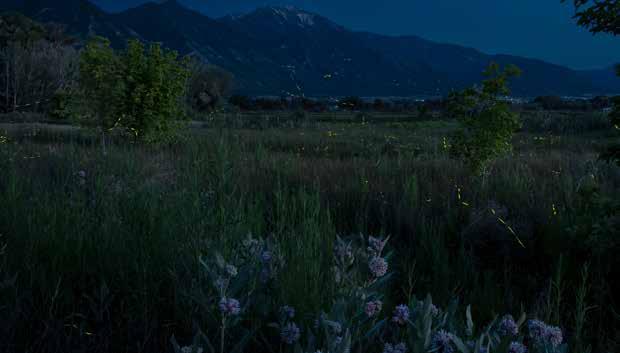
If you lined up any family members, work colleagues, or picked random people in a Utah neighborhood and put them on Family Feud and asked what their most common connection was to a farm, undoubtedly the #1 answer would be – food. Steve Harvey (or for the hardcore fans, Richard Dawson) might pull a face if you suggested otherwise, but increasing evidence points to the many benefits to communities by having thriving farms and ranches in addition to “just food”, as if that wasn’t enough.
For example, rural America is punching above its weight when it comes to serving in our military. While they represent about 18% of the total U.S. population, more than 20% of rural Americans serve in the armed forces. More specifically, about 11% of U.S. farmers are serving or have served in the military.
Another benefit of agriculture is that it serves as a stable economic base for rural communities. A thriving rural Utah takes the pressure of population growth, housing availability, and job creation off of the Wasatch Front.
Agriculture also instills values that are the cultural fabric of our state, including principles of hard work, industry, responsibility, and civic participation.
Farmers are stewards of the land and water, ensuring they can produce food for years to come. But having farms and ranches leads to improved wildlife habitat and water availability, increased carbon sequestration, and preserved open space. Many farms also provide on-farm events, further contributing to a sense of community. These environmental and social benefits are on display brightly at the Thompson Family Farm in Spanish Fork, Utah where Diane Garcia continues her family’s agricultural legacy.
The Thompson farm began when they purchased this property in 1851 in the Spanish Fork riverbottoms area that was then known as “Gopher Town”. It was so named because the early settlers of the town couldn’t find much timber, so they created “houses” by digging into the hillsides. Diane shared that when families came to visit from the lower settlement of Palmyra, the people popping out of the dugouts looked like gophers, and so the name stuck.
Garcia’s great-great-grandfather was among those living in dugouts before they built the log cabin on the property. Later, her grandfather lived on the farm alone from 1917 until 1932 in a red stone house when he then married and started his family. The Thompsons raised cattle and grew hay, and they also grew tomatoes for the Del Monte company that had a canning facility in Spanish Fork until 1968.
The Thompson farm today consists of approximately 24 acres with cattle, horses, hay ground, and some garden produce. Because the farm has been in continued ownership by the same family for more than 100 years, it is now listed as a ‘Utah Century Farm’.
Garcia began inviting community members – including a growing social media community –in 2018 to come visit the farm to learn of its heritage, and to see an ecosystem unfamiliar to most in the area, one that was the perfect habitat for fireflies, before it disappeared because of development. This light-emitting beetle is common in the southeastern United States, and in many other areas, but most Utahns aren’t used to seeing them in the Beehive State. Garcia invites visitors to her farm so they can learn of their presence in Utah and connect with the values of the farm.
“I show people the fireflies because I think they’re magical,” Garcia said. She added that most are surprised to learn that they have located fireflies in 27 of Utah’s 29 counties currently. There are six different species of fireflies in Utah, including two on the Thompson farm.
“The reason [fireflies] are more prominent in other areas is because of higher humidity and more moisture,” said Christy Bills, Invertebrate Collections Manager for
the Natural History Museum of Utah. “Just to see the glowing lights in a meadow at night…we recreate these experiences with Christmas lights or candles, but the fact that nature is doing it for us is amazing. We’re richer for knowing we have them.”
Garcia shared that one of the reasons why it is hard to find fireflies is the unique set of conditions needed for them to thrive, including wet soil, long grasses, and being shielded from artificial light. Because of this unique equation, Garcia will hold off tilling ground, using fertilizers, and cutting hay during the five weeks in early summer when the fireflies are on display.
Fireflies light up as a means of communicating with other fireflies during mating season, but the bioluminescent enzymes also serve as a defense mechanism. The enzymes are bitter and serve as a deterrent for most natural predators. During the summer, male fireflies blink in a pattern to attract the attention of female fireflies with the same pattern. Once they mate, the female firefly will bury the eggs in the soil until they hatch a few weeks later and survive as larvae in the soil until the next season.
Light pollution is another threat to the firefly habitat because it disrupts the communication between male and female fireflies. In the rapidly growing city of Spanish Fork, Garcia has worked

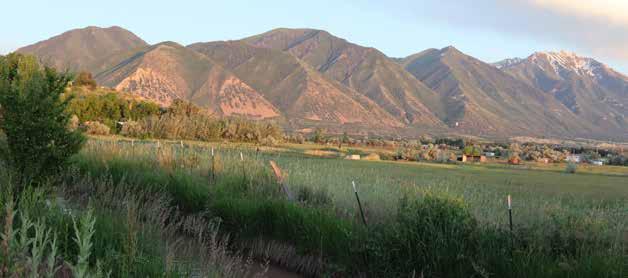
since 2016 to spread education through tours to help residents and city leaders understand the unique ecosystem of her farm and the steps they can take to mitigate challenges. Guests arrive around 9 p.m. and gather around the campfire while Garcia showcases the agricultural history found in the family’s branding irons and brand registry, as well as the historic buildings on the farm.
“My grandfather loved the connection [to the land] and had pride in his work,” Garcia said. “That’s what I want to preserve. People get disconnected from this. I don’t know if it’s the simplicity or what, but I want to keep that going for as long as I can.”
While hard to stop development altogether, Garcia has used these tours and other efforts to help inform developers and city leaders of the impacts on her property. She has advocated for installing dark sky compliant streetlights and planting trees to shield her fields from the light of homes. Garcia has also worked to have the fireflies and her farm listed on the National Historic Registry, which should take place later this year.
The community benefits of Garcia’s farm are emblematic of agriculture’s history in many Utah communities, with many not fully recognizing them until too late. With continued efforts like Garcia’s and others like her throughout the state, these additional benefits will be appreciated as much as fresh corn-on-the-cob, a mouth-watering peach, or a fine-grilled steak.





Asummer without breakfast on Ruth’s Diner patio is summer without sunshine. For almost a century, Ruth’s Diner has served up mouth-watering homemade delicacies, always with fresh ingredients and sometimes paired with juicy stories.

The entire menu offers solid choices, but the breakfast fare headlines Ruth’s offerings. Patrons often wait over an hour to feast on heavenly homemade buttermilk pancakes with real maple syrup, jaw-droppingly delicious milehigh biscuits with homemade gravy, savory and decadent variations of Eggs Benedict, or sample a bit of everything with Ruth’s Breakfast Combo.
Patrons also rave about the Meat Loaf Burger, chicken fried steak, satisfying salads, and Grandma Claire’s Baked Mac and Cheese, among many other lunch and dinner menu selections. Of course, there are the irresistible mile-high homemade biscuits that accompany each meal.
“As soon as you sit down, they always give you giant, warm homemade
biscuits that pair perfectly with their raspberry jam,” said Brie Borrell, a Salt Lake City resident, and a regular patron. “Not to mention, they put the pats of butter underneath the biscuits so it’s easier to spread.”
Since the beginning, it’s been the thoughtful, unconventional additions that make Ruth’s Diner different.

But let’s not get ahead of ourselves.
The story of Ruth Evan’s decision to haul a converted Salt Lake City trolley car up Emigration Canyon is almost as well-known as the mile-high biscuits and jam they serve with each meal.
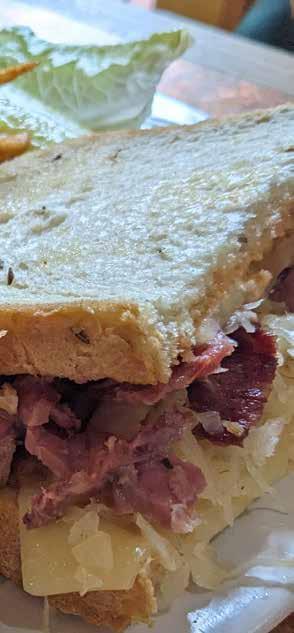
As a midwestern transplant, performing in cabaret clubs around Salt Lake City in the early 1900s, Ruth chose a different path from her Latter-day Saint family. As a result, she helped pioneer a women’s business movement in what was a predominantly Mormon community in the 1930s and not only opened a successful hamburger joint but provided a respite for those in need of solace, comfort, and a hot meal.
When Ruth moved her business upward, people followed, and the legend of Ruth’s Diner was firmly entrenched amid canyon peaks and Utah history.
As the second oldest restaurant in Utah, Ruth’s Diner is part of an elite club of establishments that, despite enduring a depression, recessions, wars, canyon flooding, and a pandemic, have finetined a formula for success.
While guests rarely leave hungry, Nate Wright, a first-time patron, quickly discovered Ruth’s appeal isn’t just about the food. “Driving up Emigration Canyon is really beautiful,” he said. “And Ruth’s staff makes sure you are enjoying your meal with great, friendly service. I love the natural canyon surroundings and creek. This is where you swap stories with your friends, and the server laughs right along with you. It’s that kind of place.”
That sense of sanctuary launched Ruth’s Hamburgers in 1930, and it sustains Ruth’s Diner 93 years later.
A large patio hosts relaxed, scenic dining where Ruth’s duplex once stood, and images on the walls illustrate life highlights, milestones, and her beloved dogs. Knowing the history of Ruth certainly adds to the diner’s charm. Although most patrons may miss the significance of the Lucky Strikes sign hanging over the patio door or overlook the reason behind the tipsy, creaky, lowceilinged stroll through the original portion of the Diner–they remember how eating here made them feel.
Ruth’s door remains open to anyone seeking a delicious meal, amazing service, and breathtaking seasonal views that provide a backdrop for generations of gatherings of all kinds, for any occasion, and from every part of the country.
Ruth’s Diner is located at 4160 E. Emigration Canyon. It shares a parking lot with Emigration Brewing Company. For hours of operation and menus, visit ruthsdiner.com

Igave up soda at 14 years old for cross country and track, and I’ve never looked back. However, on really hot summer days, I sometimes crave something cold and bubbly. This no recipe “recipe” fits the bill perfectly.
MINT SIMPLE SYRUP:
1 cup sugar
1 cup water
1 cup mint leaves
Combined the sugar and water in a saucepan and bring to a boil over medium -high heat, whisking to dissolve the sugar. Add the mint leaves and reduce the heat to a simmer. Let simmer for 5-10 minutes until slightly syrupy. Remove from heat and let the mint steep in the syrup for 30 minutes to an hour. Strain the leaves out and store the syrup in a clean container in the fridge.
MINT SODA:
crushed ice (optional)
mint simple syrup
chilled sparkling water- plain or flavored (lime would be good)
lime wedges
Add mint syrup to a glass to taste, pour in some sparkling water, squeeze in some lime and stir. Add crushed ice if you like, and garnish with a sprig of mint.


Nutrition experts stress that the health benefits of fruits and vegetables outweigh any potential risk of pesticide exposure. The University of California's Riverside Personal Chemical Exposure Program examines how many fresh fruits and vegetables a man, woman, teen, and child could eat and still not consume enough pesticide residues to reach a level where an adverse effect could be observed.
Try

850 apple servings

A woman could consume 850 servings of apples in one day without any effect even if the apples have the highest pestic de residue recorded for apples by the USDA

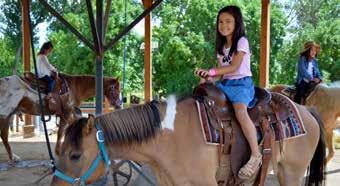

157 bell pepper servings
the h ghest pesticide res due recorded for strawberries by the USDA

•

AUGUST 1
National Raspberry Cream Pie Day


AUGUST 2
National Ice Cream Sandwich Day


AUGUST 3
National Watermelon Day

AUGUST 6
National Root Beer Float Day

AUGUST 8
National Frozen Custard Day

AUGUST 9
National Rice Pudding Day

AUGUST 10
National S’mores Day
AUGUST 12
National Julienne Fries Day

AUGUST 14
National Creamsicle Day

AUGUST 15
National Lemon Meringue Pie Day

AUGUST 18
National Ice Cream Pie Day
AUGUST 20
National Bacon Lovers Day

SEPTEMBER 16
National Cinnamon Raisin Bread Day

SEPTEMBER 17
National Apple Dumpling Day

SEPTEMBER 18 Rice Krispies Treats Day

SEPTEMBER 20
National Fried Rice Day

SEPTEMBER 21
National Chai Day

SEPTEMBER 25
National Quesadilla Day

SEPTEMBER 26
National Key Lime Pie Day

SEPTEMBER 30
Extra Virgin Olive Oil Day

















